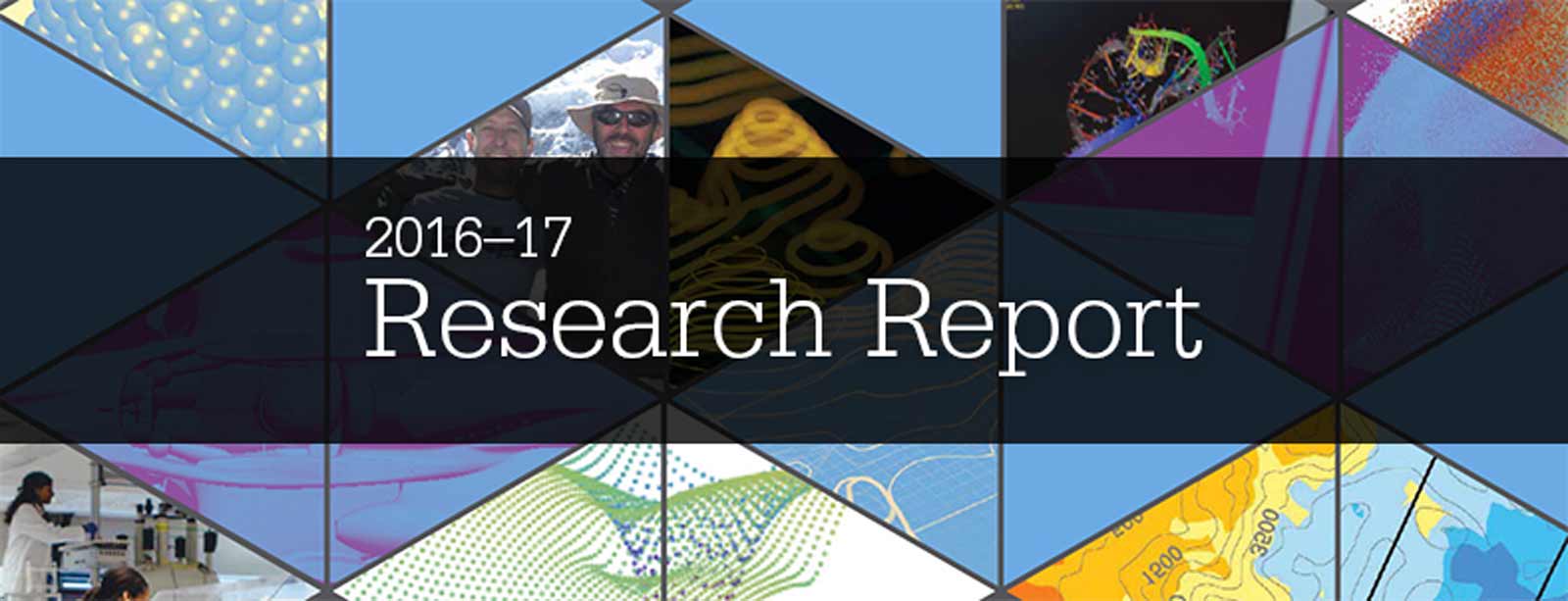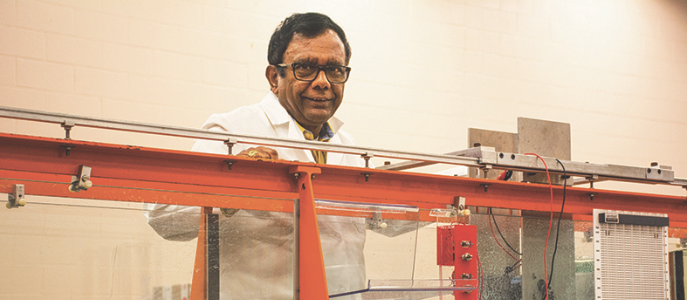Central State University’s Subramania Srithrahan, Ph.D., is fine-tuning a product that could result in clean renewable energy, new jobs and better boating and swimming safety on the nation’s rivers.
The project centers on using a computer-modeling software package on the Ohio Supercomputer Center’s Oakley Cluster to research using cross-flow turbines within non-powered dams. The FLUENT software, a product of ANSYS, uses computational fluid dynamics to model flows of substances such as water or air.
“The technology we are trying to develop can result in a lot of power generation,” said Srithrahan, associate director of research for CSU Land Grant programs. “It’s a great renewable-energy option and, of course, can result in a lot of employment and manufacturing within the United States.”
There are more than 80,000 non-powered dams in the U.S., and Ohio has a considerable number of these dams, especially on the Ohio River.
A recent study conducted by Oak Ridge National Laboratory found that the potential turbine hydropower within in these NPDs is estimated at 12 gigawatts, which would complement solar, wind and other clean-energy sources. In the 100 existing NPDs along the Ohio, Mississippi, Alabama and Arkansas rivers alone, the National Hydropower Association estimated that converting them into power-generating facilities would serve more than 250,000 households in those regions, while avoiding two-million metric tons of carbon-dioxide emissions per year.
Srithrahan’s objective is to determine the optimal parameters for the Williams Crossflow Turbine, which takes advantage of downward water flow in small dams to generate power. The WIliams Crossflow Turbine is named after Fred Williams, owner of Dayton Hydroelectric Ltd., which has worked with CSU on the project.
“We are working on the details to develop a prototype and test it,” Srithrahan said. “We use crossflow turbine technology to tap into hydropower generation, but it also prevents boating accidents and swimming accidents in smaller dams because people can get trapped in the hydraulic broil on the toe of the dam.”
Srithrahan’s history with OSC goes back many years but ramped up when he found out the Center offered FLUENT’s CFD software.
“That’s something we took advantage of,” he said, “We had to generate our own algorithms, work out our own codes. When we found this was available, we were able to ratchet up our use of OSC and benefit greatly.”
FLUENT testing has helped develop the optimal parameters of the turbine, including information about the velocity vectors, torque, power and overall efficiency of the system. The results are being used to develop a physical model that will be tested in the hydraulic laboratory at CSU.
The final objective of the project is to install and monitor for a year a prototype of the Williams Crossflow Turbine in a dam across the Miami River near the university in Hamilton, Ohio.
“We have brought a team together to test and develop this turbine into a full-scale model and test it,” Srithrahan said. “This has the potential to not only be of good use across the United States, but internationally, with a lot of job creation in Ohio. And the help we’ve gotten from OSC is fantastic.”
###
Written by Ross Bishoff
Project Lead: Subramania Sritharan, Ph.D., Associate Director for research, Land-Grant Program, Central State University
Research Title: CFD analysis of cross flow turbines for hydropower
Funding Source: Central State University
Website: http://www.centralstate.edu/academics/cse/pages01.php?num=17

